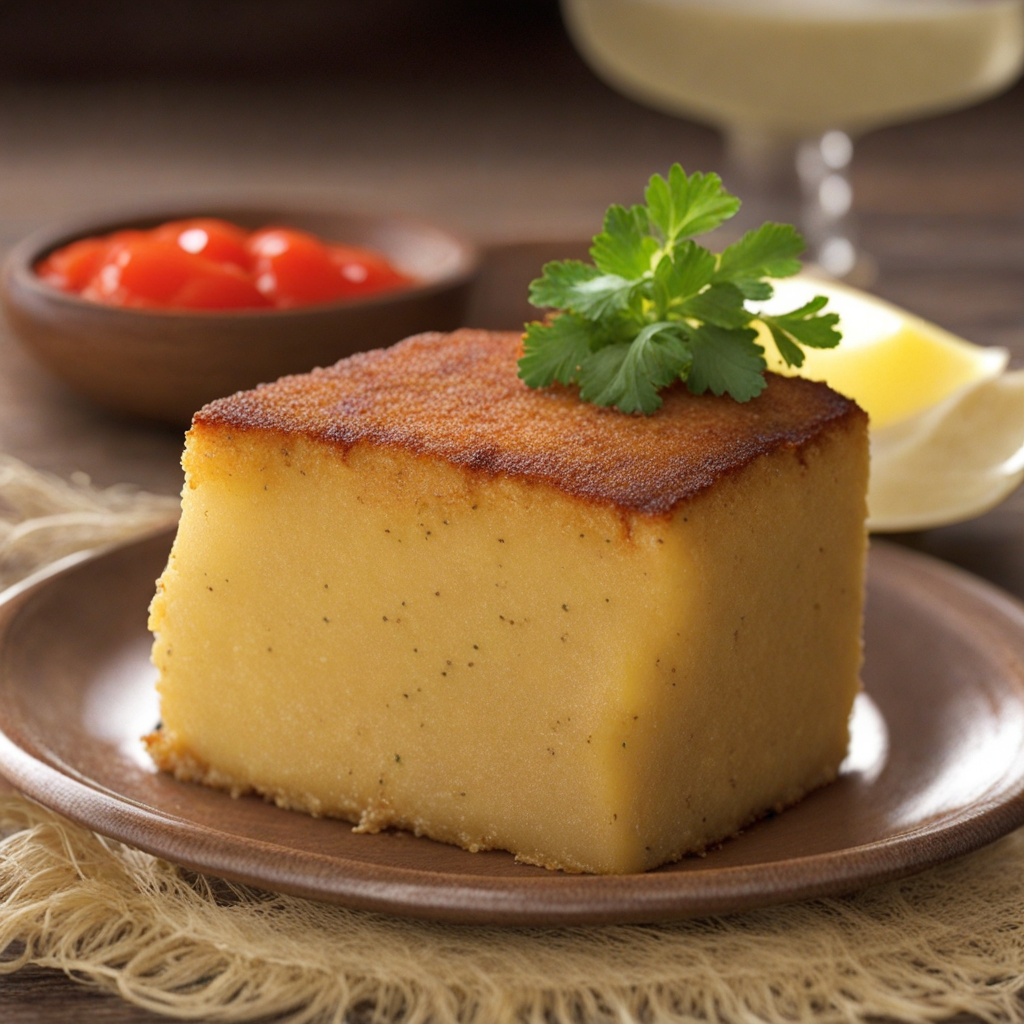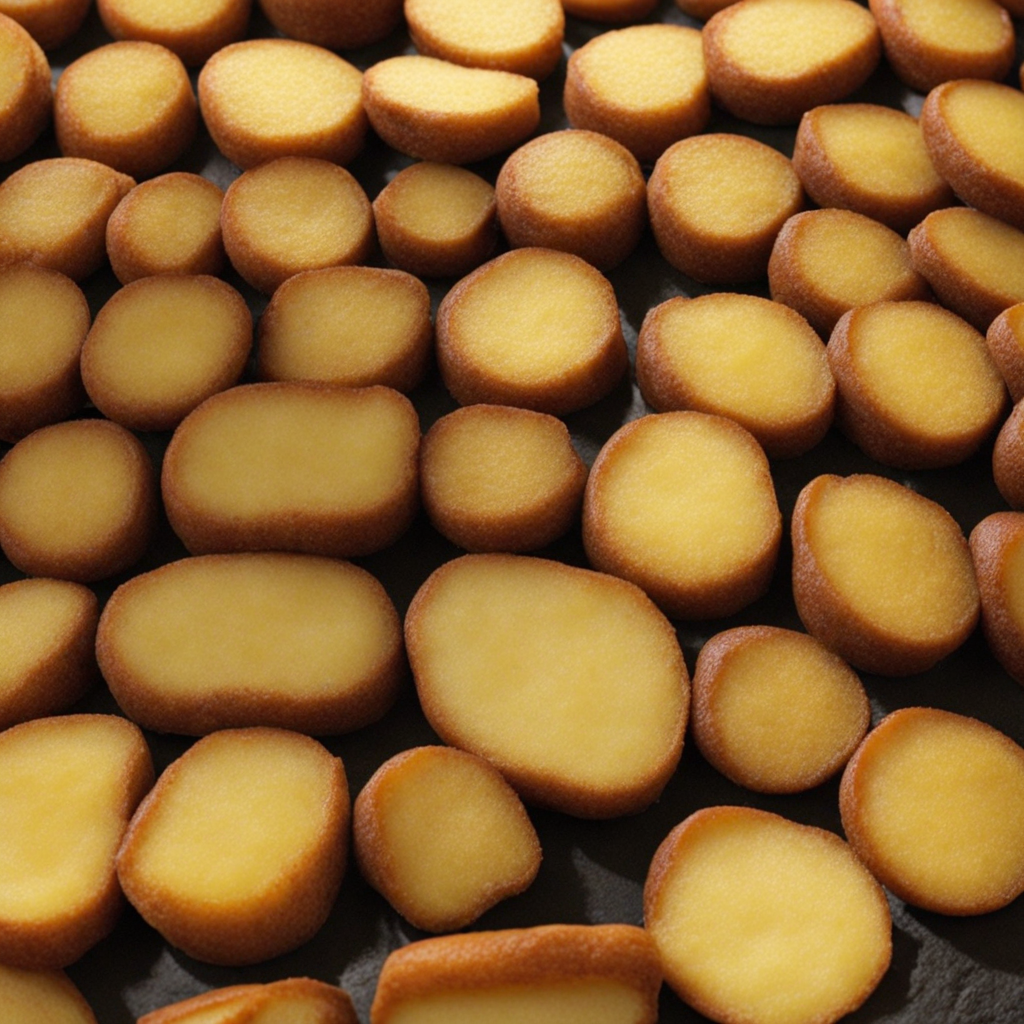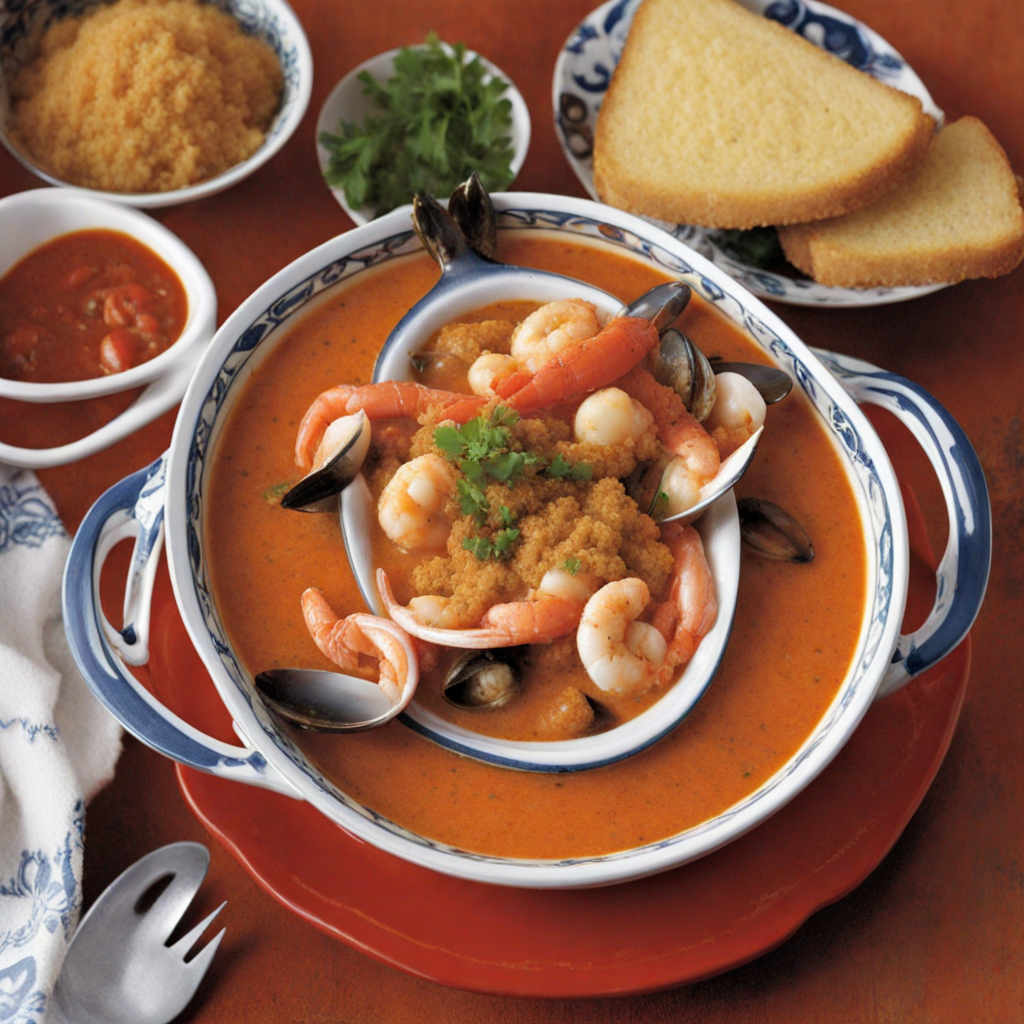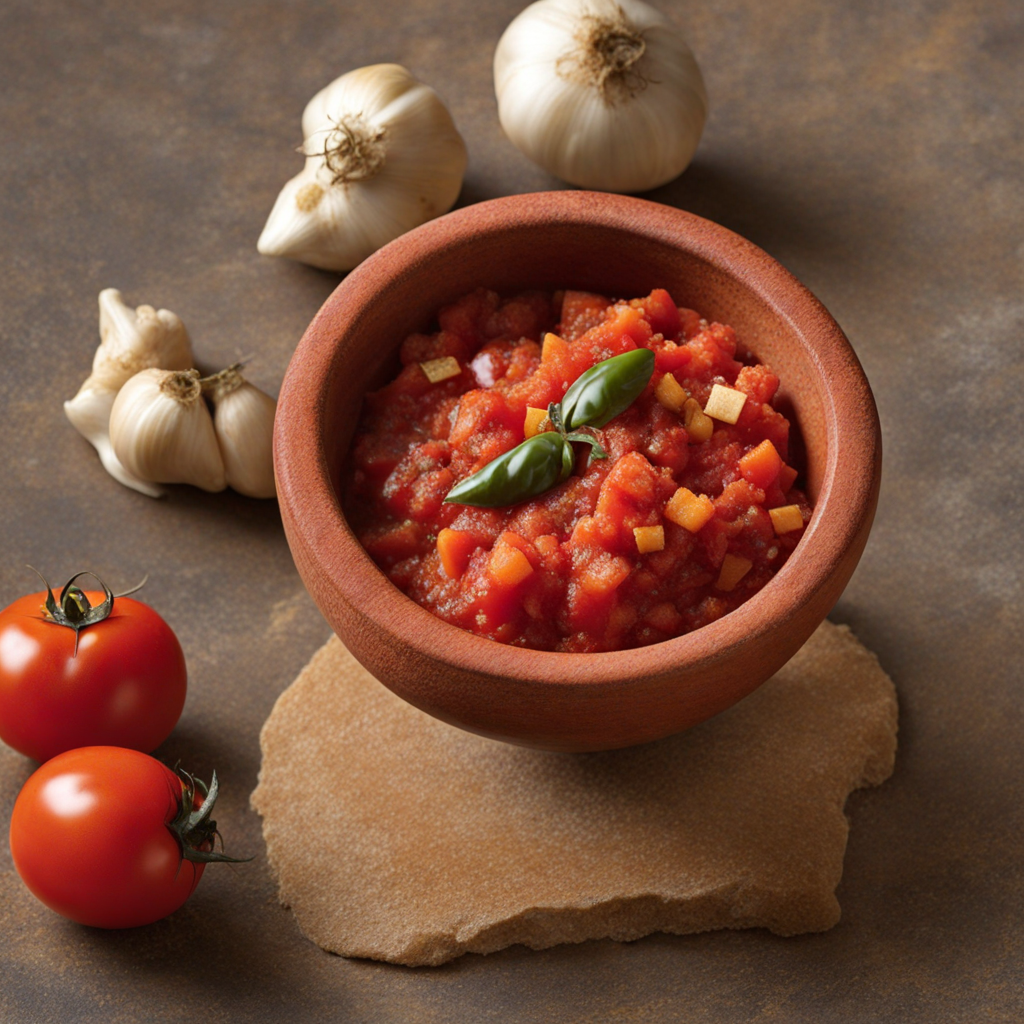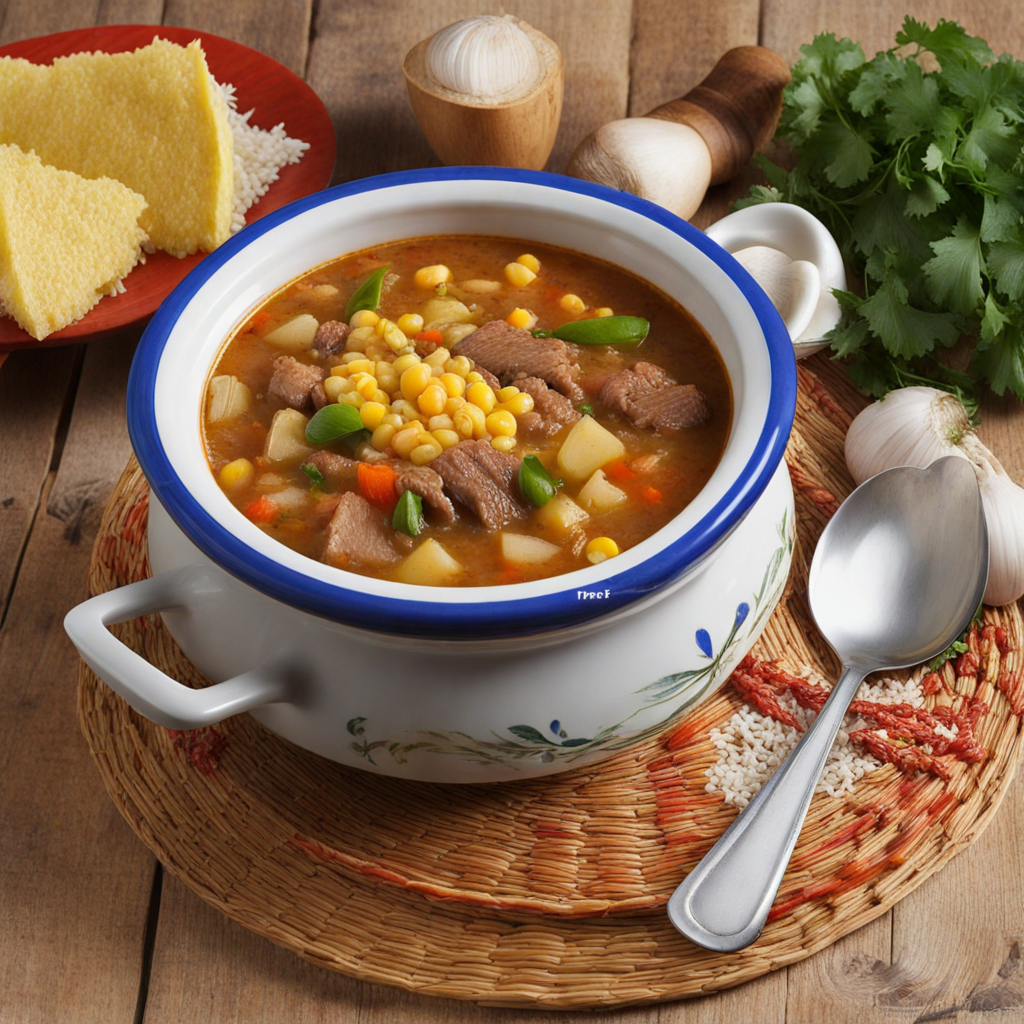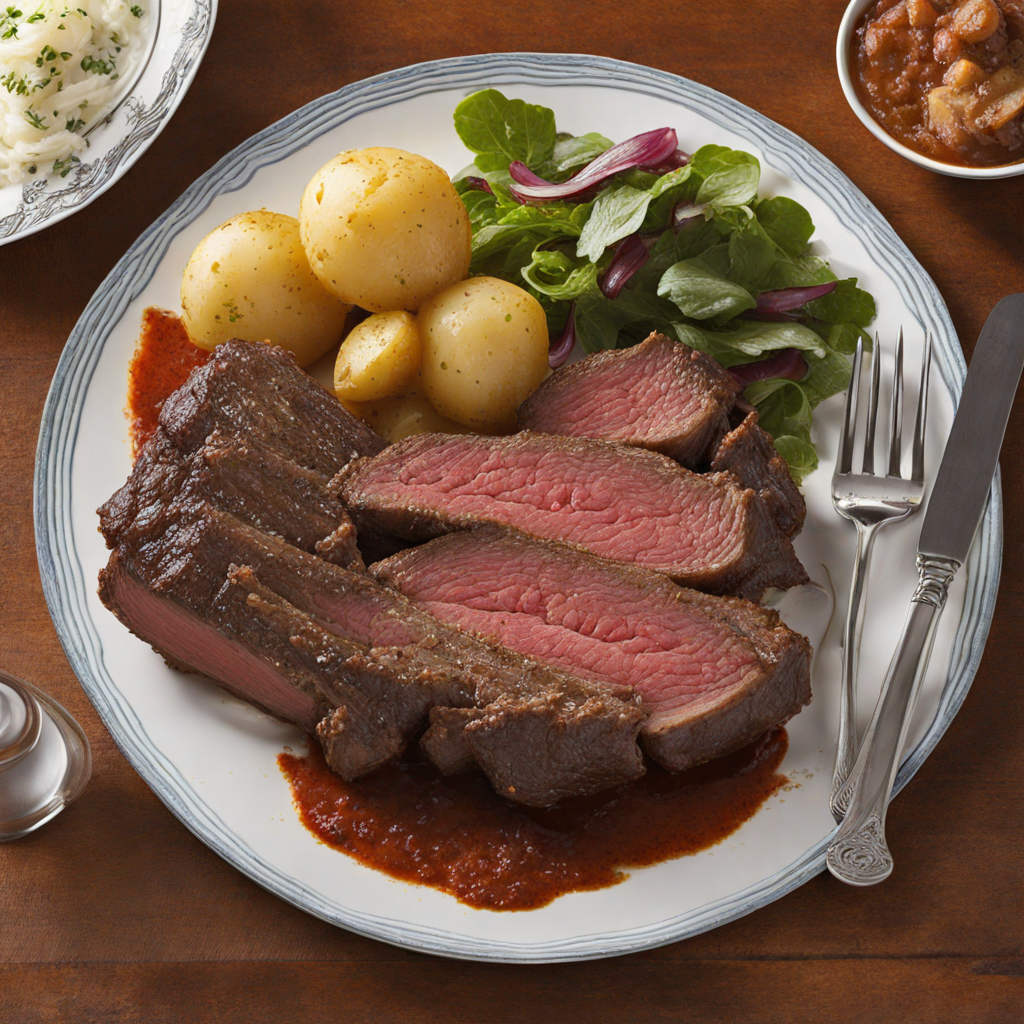Milcao
Milcao is a traditional Chilean dish that beautifully showcases the country's culinary heritage. Originating from the southern regions of Chile, particularly in the Chiloé archipelago, milcao is a type of potato pancake made primarily from grated raw potatoes mixed with cooked potatoes. This unique combination creates a delightful texture that is crispy on the outside while remaining soft and flavorful on the inside. The use of native ingredients, such as Chilean potatoes, reflects the rich agricultural traditions of the area, making milcao a beloved comfort food among locals. What sets milcao apart is its versatility; it can be enjoyed in various ways. Traditionally, milcao is served as a side dish alongside meats or seafood, but it can also be a stand-alone treat, often accompanied by pebre, a fresh salsa made from tomatoes, onions, and cilantro. The flavor profile is simple yet satisfying, with a hint of earthiness from the potatoes and a subtle sweetness that arises from the cooking process. Some variations even include fillings like pork or cheese, which add an extra layer of deliciousness to each bite. Milcao is more than just a dish; it represents the communal spirit of Chilean culture. Often made during family gatherings or festive occasions, the preparation of milcao is a labor of love, bringing people together in the kitchen. Whether enjoyed on its own or as part of a larger meal, milcao invites food enthusiasts to explore Chile's vibrant culinary landscape, making it a must-try for anyone looking to expand their palate with authentic flavors.
How It Became This Dish
The History of Milcao: A Culinary Gem of Chile #### Origins Milcao is a traditional Chilean dish that epitomizes the rich culinary tapestry of the country, particularly in the southern region of Chiloé. Its roots trace back to the indigenous Mapuche and Chono peoples, who cultivated potatoes long before the arrival of the Spanish in the 16th century. The potato, a staple of their diet, became central to their culture and economy. The name "milcao" derives from the Mapudungun word "milka," which means "to mix," reflecting the dish's primary ingredient: potatoes. The early versions of milcao were simple, relying on the natural flavors of locally grown potatoes, which were then combined with other ingredients such as animal fat, salt, and occasionally other vegetables or spices, depending on what's available. #### Cultural Significance Milcao is not just food; it is a symbol of community and tradition in Chiloé, particularly during festivals, family gatherings, and communal events. The act of preparing milcao is often a communal affair, where families and friends come together to peel, grate, and mix the potatoes, creating a sense of unity and shared heritage. The island of Chiloé, known for its lush landscapes and rich cultural traditions, has a unique culinary identity. Milcao is emblematic of the region's reliance on simple, hearty ingredients, and it showcases the innovative spirit of the local people who have adapted their culinary practices over centuries. In the context of Chile's broader cuisine, milcao represents the intersection of indigenous food practices and European influences, particularly Spanish. #### Development Over Time As Chile's culinary landscape evolved, so too did milcao. The introduction of new ingredients during the colonial period, such as wheat and various spices, began to shape the dish. While the classic milcao is primarily potato-based, variations emerged that incorporated wheat flour, adding a new texture and flavor dimension. This adaptation speaks to the resilience and creativity of the Chilean people, who transformed their indigenous practices to include new influences while preserving their culinary heritage. During the 19th century, milcao gained popularity beyond Chiloé, thanks in part to increasing migration and the burgeoning Chilean national identity. As Chileans began to explore and celebrate their regional foods, milcao became a symbol of Chiloé’s unique culture. It was often featured at local fairs and festivals, where it was served alongside other traditional dishes, showcasing the culinary diversity of the region. The 20th century saw milcao further integrated into Chilean cuisine, particularly as Chiloé became more accessible to tourists. The dish captured the imagination of food enthusiasts and travelers, helping to establish it as a staple of Chilean gastronomy. Cookbooks and culinary shows began to highlight milcao, further elevating its status and encouraging home cooks to embrace the dish. #### Preparation and Variations The traditional preparation of milcao involves grating or mashing raw potatoes and mixing them with cooked potatoes to create a dough-like consistency. This mixture is then shaped into patties and cooked on a hot griddle or baked until golden brown. The texture is often described as a delightful combination of crispy on the outside and soft on the inside, making it a satisfying accompaniment to various dishes. While the classic milcao is delightful in its simplicity, regional variations have emerged that reflect the diverse culinary influences present in Chile. For example, some recipes incorporate cheese or meat into the milcao mixture, resulting in a richer flavor profile. Others might include spices such as cumin or paprika, which lend an aromatic quality to the dish. In contemporary Chile, milcao has found its way into restaurants and bistros, often served alongside pebre (a Chilean condiment made with tomatoes, onions, cilantro, and chili peppers) or as part of a more elaborate feast featuring traditional Chilean meats and vegetables. This evolution underscores the dish’s adaptability and enduring appeal. #### Milcao Today In modern-day Chile, milcao continues to be a beloved dish, not just in Chiloé but throughout the country. Its presence at festivals, such as the famous "Semana de la Cocina Chilena" (Chilean Cuisine Week), showcases the ongoing celebration of traditional foods in contemporary culinary culture. Chefs often experiment with milcao, finding innovative ways to incorporate it into modern menus while respecting its historical roots. Moreover, the rise of food tourism has brought renewed attention to milcao and other traditional dishes. Culinary tours in Chiloé often include milcao-making workshops, where participants learn about the history of the dish while getting hands-on experience preparing it. This fusion of education and culinary exploration has helped keep the tradition alive while introducing it to new audiences. #### Conclusion Milcao is more than just a dish; it is a testament to the resilience of culinary traditions in Chile. Rooted in indigenous practices and adapted through centuries of cultural exchange, milcao embodies the spirit of Chiloé and the broader Chilean identity. Through its evolution, it has managed to retain its essence while embracing modern influences, making it a beloved staple on the plates of many Chileans. As Chile continues to celebrate its diverse culinary heritage, milcao stands as a cherished reminder of the past, a delicious bridge between generations, and a symbol of community and tradition. Whether enjoyed at a family gathering, a local festival, or a contemporary restaurant, milcao remains a delicious and significant part of Chilean culture, inviting all to partake in its rich history and flavor.
You may like
Discover local flavors from Chile


